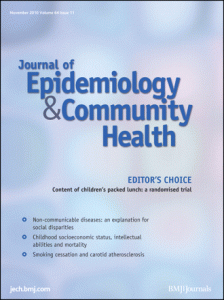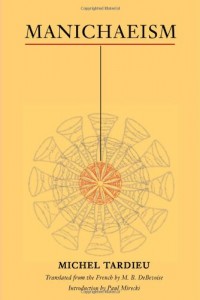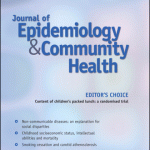 The fact we are not ill more often is due to the remarkable capacity our bodies have to revert to a state of ‘homeostasis’ – a somewhat dull word provided by Walter Cannon in the early 20th century to summarise the work of the physiologist Claude Bernard who was based in Paris in the 1850s. It has dominated biology, physiology and medicine ever since. Homeostasis is regularly used to describe the exquisite intrinsic ability we possess to respond to, counteract and adapt to external and internal sources of damage and disturbance to maintain health/function in us and other living organisms.
The fact we are not ill more often is due to the remarkable capacity our bodies have to revert to a state of ‘homeostasis’ – a somewhat dull word provided by Walter Cannon in the early 20th century to summarise the work of the physiologist Claude Bernard who was based in Paris in the 1850s. It has dominated biology, physiology and medicine ever since. Homeostasis is regularly used to describe the exquisite intrinsic ability we possess to respond to, counteract and adapt to external and internal sources of damage and disturbance to maintain health/function in us and other living organisms.
A more contemporary – albeit controversial term to describe this is: ‘Homeodynamics’.[1] This is the concept that we are not static but constantly adapting. Homeodynamics, accounts for the fact that the internal milieu of complex biological systems is not permanently fixed, is not at equilibrium, and is subject to dynamic regulation and interaction among various levels of organisation. Aging, senescence and death are the final manifestations of unsuccessful homeodynamics and in utero exposure represents the first opportunity and experience for remodelling and constant adaptation.
Life is dynamic organisation under homeodynamic conditions.[2]
An increasing body of evidence suggests that a component of our resilience or otherwise (Vulnerability/Susceptibility) is encoded in utero and promotes traits that may need specific management to avoid unwanted gene expression. Some of these are due to dietary exposures and or deficiencies; others are due to environmental challenges such as specific chemicals or stress and the subsequent gene expressions.
In genetics, gene expression is the most fundamental level at which genotype gives rise to the phenotype. The genetic code is “interpreted” by gene expression, and the properties of the expression products give rise to the organism’s phenotype (the physical, biochemical, and physiologic makeup of an individual; determined by genetic and environmental factors). “Phenotype” is often used to refer to the overt, observable features that an individual has.
 The Return of Manicheaism
The Return of Manicheaism
The idea that our future health competence may be determined by our mothers, or our mother’s mother’s nutritional status as well as their and our environmental exposure is one riddled with subtleties. Yet many commentators on this subject are prone to falling into the dogma first alliterated by the prophet Mani and later proselytised by followers of his religious theology called Manichean’s in which life and the body for simplicity, are defined by good and bad (evil). This opposing and highly frictional dichotomy was defined as dualism.
Dualism takes the position that the world can be divided into two opposing sides, one of its ultimate expressions is found in the religion called Manichaeism that thrived during the third and seventh centuries.
Mani the founding prophet was martyred in AD277 after successfully selling the concept that there is an eternal conflict between absolute good and absolute evil. Some of this theological dogma is still found today in contemporised religions, especially in their fundamentalist forms. This deterministic approach, seeing everything in black and white rather than shades of grey, is known by philosophers as the Manichean Fallacy.
Dualism is also still alive and kicking and practiced by ‘sceptics’ from both sides of the divide between non pharmacological/surgical medicine and medicine that uses other strategies than pharmaceuticals.
Nutritional Therapy falls into the second camp according to many, unless treating diseases of profound nutrient deficiency such as scurvy, beriberi and kwashiorkor in which case it falls into the first camp. Other ‘medical’ conditions such as coeliac and IgE allergies are also captured and held up as medical, rather than nutritional problems.
It is the developmental side of Nutritional Therapy – the section that pushes the evolving science and links it to nutritional supplements or dietary selections that attracts most criticism or stimulates Manichean rhetoric. This is commonly seen in the Dietetic/Nutritional Therapy conflicts in which accusations of absence of science are frequently lobbed at each other. Often, it must be said in a polite manner, but at times in a strident and polarised manner.
Nutritional Therapy as a discipline is not immune to zealots and produces it’s own Manichean’s who are prone to holding and defending what may at best be called ‘bold’ unsubstantiated statements and polarised positions and as such attract ridicule rather than discourse from the opposing camp followers. In the same manner natural medicine advocates will sometimes forget the fantastic advances in medicine that provide lifesaving interventions every day and describe all modern medicine as problematic, financially fixated and the work of groups of individuals far removed from the core values of the ‘natural’ movement.
If you are bound to this way of thinking it can result in problematic conclusions – for if you believe you are on the side of absolute good and your opponent is on the side of absolute evil – almost any step you take against them can be viewed as being morally justifiable. This is however a state of intellectual apathy – if you don’t do the hard work of trying to understand your opponents you may also never question the actions and intent of your own side.
Nature Vs Nurture
Another important area attracting dualistic thinking – and the main focus of this article is in utero programming. Until quite recently, geneticists have dominated the biological sciences in their hunt for single genes and related diseases – many have been proposed but hardly any have had a level of causality confidently assigned to them. Meanwhile, the newer science of epigenetics has slowly been gathering pace and represents a variation that appears to be gaining traction in the explanations we all seek for health and disease: that the environment and especially the availability of food and nutrients will determine gene expression. Whilst regarded as a new science by many, it should be noted that the greatest name associated with evolutionary changes; Darwin, described a similar mechanism as ‘conditions of existance’ elegantly discussed by David Marsh in the article: The Origins of Diversity: Darwin’s Conditions and Epigenetic Variations published in 2008.
Epigenetics involves the inheritance of a property that does not involve a change in DNA sequence. In effect it is a heritable but reversible state. The effector/environmental factor has a powerful effect on the cell and genomic expression – but on removal or addition of the missing element, the gene will revert to its original state.
Epigenetics has led to the development of another new science, called nutrigenomics.
Nutrigenomics is the science that examines the response of individuals to food compounds using post-genomic and related technologies (e.g. genomics, transcriptomics, proteomics, metabolomic etc.). The long-term aim of nutrigenomics is to understand how the whole body responds to real foods using an integrated approach termed ‘systems biology’. The huge advantage in this approach is that the studies can examine people (i.e. populations, sub-populations – based on genes or disease – and individuals), food, life-stage and life-style without preconceived ideas.
The next development in this journey has been to look back further to see if foetal experiences may predict future risk – Manichaeism enthusiasts suggest that evidence for in utero health programming has no substance and therefore no scientific validity.
As a non-Manichean I draw attention to recent papers I reviewed suggesting there is a role for in utero health programming and that it represents a possible strategic point of intervention.
Does Birth Timing Increase Risk for Food Allergies?
As if there are not a million things to worry about when having a baby parents may now need to plan conception and birth to correspond to high risk allergy months;
Children whose eleventh week of gestation occurs during the high-pollen months of April and May (conception being due to dull January and February nights!) are more likely to test positive for food allergies, according to a cohort observational study published online October 2010 in the Journal of Epidemiology and Community Health.[3]
The key points are:
1. Double the incidence of food allergy (10% vs. 5%) among children born in October–November (10%) and lowest among those born in June–July (5%),
2. and correspondingly highest among children who were in their 11th gestational week in April–May (11%), the season of high concentrations of birch and alder pollen, and lowest among those reaching that stage in December–January (6%).
Conclusions: Children having their early gestational period in the pollen season for broad-leafed trees are more prone to sensitisation to food allergens than other children
The authors state:
In our study, the observed seasonal variations in the incidence rates are equally concordant with the underlying reasons being linked with either the season of birth or the season of the 11th gestational week, or even both, Dr. Pyrhönen and colleagues conclude. These children, however, may also have been more heavily exposed to viral infections and lack of sunlight (i.e., have a vitamin D deficiency) during their neonatal months. These factors could also influence their immunologic development.
Drug/Gene Interactions
So what about medications the women may take during pregnancy – could these increase the incidence of allergy, meaning that conception timing and medication intake combine to add additional immunological developmental stress? In the November 2010 Journal of Allergy and Clinical Immunology a team of researchers looked at the consumption of the commonly recommended pain killer acetaminophen[4] (paracetemol) a medication generally agreed to be safe in small doses whilst pregnant and a welcome aid to pain control for many mothers to be.[5]
This paper suggests that whilst significant end point complications linked to pregnancy may have no associated risk with acetaminophen consumption, the future capabilities of the progeny to avoid developing an allergic profile may not be. This paper suggests an outcome of unintended consequence and demonstrates yet again the importance of ‘epigenetics’.
The author’s state:
Maternal antioxidant gene polymorphisms may modify the relation between prenatal acetaminophen exposure and childhood asthma, strengthening evidence for a causal association. In contrast, relations between infant acetaminophen use and asthma and atopy were not modified by child genotype and may be confounded by pre-existing wheeze or allergy.
From a clinical perspective it is highly unlikely that the specific antioxidant genes would be tested for prior to the recommendation to either use or abstain from paracetemol and illustrates some of the complexities that clinicians will face in coming years.
Peanuts Back on the Scene
The same journal then published a contradictory paper related to the risk of peanut allergy and consumption by mothers during pregnancy.[6]
Atopic infants of mothers with a high consumption of peanuts while pregnant may be at an increased risk of developing sensitisation. This is in contrast to other papers suggesting that small levels of exposure to antigens such as peanuts in utero and early years will reduce sensitisation.
Gideon Lack’s study concluded:
We demonstrate that Jewish children in the UK have a prevalence of peanut allergy that is 10-fold higher than that of Jewish children in Israel. This difference is not accounted for by differences in atopy, social class, genetic background, or peanut allergenicity. Israeli infants consume peanuts in high quantities in the first year of life, whereas UK infants avoid peanuts. These findings raise the question of whether early introduction of peanut during infancy, rather than avoidance, will prevent the development of peanut allergy.[7]
Researchers in a recent paper published in the same journal as Dr Lack’s paper evaluated almost 500 infants with allergies to milk or eggs or with significant eczema (a common sign of allergies) and found that infants whose mothers ate peanuts more than twice a week during pregnancy were more sensitive to peanuts than those whose mothers ate peanuts less often. Being sensitive to peanuts is a strong predictor of peanut allergies but isn’t a guarantee of course.
One of the confounding factors that neither study has explored is the role of the mucosal immune systems programmers – the microbiota. These are subject to environmental differences and may provide an explanation for why UK based children respond differently to peanut consumption that Israeli based children.[8]
Comment
So what can we say to parents based on this information regarding the development of peanut allergy and peanut consumption during pregnancy? This latest study as with others has problems and no scientific community is ready to take a strong position as yet. However, oral tolerance, i.e the ability to eat foods and NOT react is linked to small levels of antigen exposure and suitable bacterial modification of Dendritic cell phenotypes – so maybe small amounts of peanuts and suitable probiotics will confer an immunological, nutrigenomic, epigenetic phenotypical advantage!
Dendritic cells are specialised collectors of information that then transfer this to our immune system along with certain bacteria and other elements to induce a slow recognition and suppression of immune reactivity. Maybe at this point even the most strident of Manichean’s will see that he has to become more tolerant to these ideas as well!
Michael Ash is a speaker on “Pregnancy, immunity and allergy prevention: the role of natural interventions in managing current and future health problems” at the conference Nutrition in Childhood. New strategies for surviving and thriving in a changing environment on Tuesday, 18th January at ORT House Conference Centre, London NW1. For more details please contact Pavilion on Tel. 0844 880 5061 or email [email protected].
References
[1] F. E. Yates. Order and complexity in dynamical systems: Homeodynamics as a generalized mechanics for biology. Mathematical and Computer Modelling.Volume 19, Issues 6-8, March-April 1994, Pages 49-74 View Abstract
[2] Lloyd D, Aon MA, Cortassa S. Why homeodynamics, not homeostasis? ScientificWorldJournal. 2001 Apr 4;1:133-45. Review. View Abstract
[3] Pyrhönen K, Läärä E, Hiltunen L, Kaila M, Hugg T, Näyhä S.Season of the first trimester of pregnancy predicts sensitisation to food allergens in childhood: a population-based cohort study from Finland. J Epidemiol Community Health. 2010 Oct 19. View Abstract
[4] Shaheen SO, Newson RB, Ring SM, Rose-Zerilli MJ, Holloway JW, Henderson AJ.Prenatal and infant acetaminophen exposure, antioxidant gene polymorphisms, and childhood asthma. J Allergy Clin Immunol. 2010 Nov 2. View Abstract
[5] Rebordosa C, Kogevinas M, Bech BH, Sørensen HT, Olsen J. Use of acetaminophen during pregnancy and risk of adverse pregnancy outcomes. Int J Epidemiol. 2009 Jun;38(3):706-14. Epub 2009 Mar 30 View Abstract
[6] Sicherer SH, Wood RA, Stablein D, Lindblad R, Burks AW, Liu AH, Jones SM, Fleischer DM, Leung DY, Sampson HA. Maternal consumption of peanut during pregnancy is associated with peanut sensitization in atopic infants. J Allergy Clin Immunol. 2010 Oct 27. View Abstract
[7] Du Toit G, Katz Y, Sasieni P, Mesher D, Maleki SJ, Fisher HR, Fox AT, Turcanu V, Amir T, Zadik-Mnuhin G, Cohen A, Livne I, Lack G. Early consumption of peanuts in infancy is associated with a low prevalence of peanut allergy. J Allergy Clin Immunol. 2008 Nov;122(5):984-91. View Abstract
[8] Pochard P, Vickery B, Berin MC, Grishin A, Sampson HA, Caplan M, Bottomly K.Targeting Toll-like receptors on dendritic cells modifies the T(H)2 response to peanut allergens in vitro. J Allergy Clin Immunol. 2010 Jul;126(1):92-7.e5. Epub 2010 Jun 9. View Abstract





